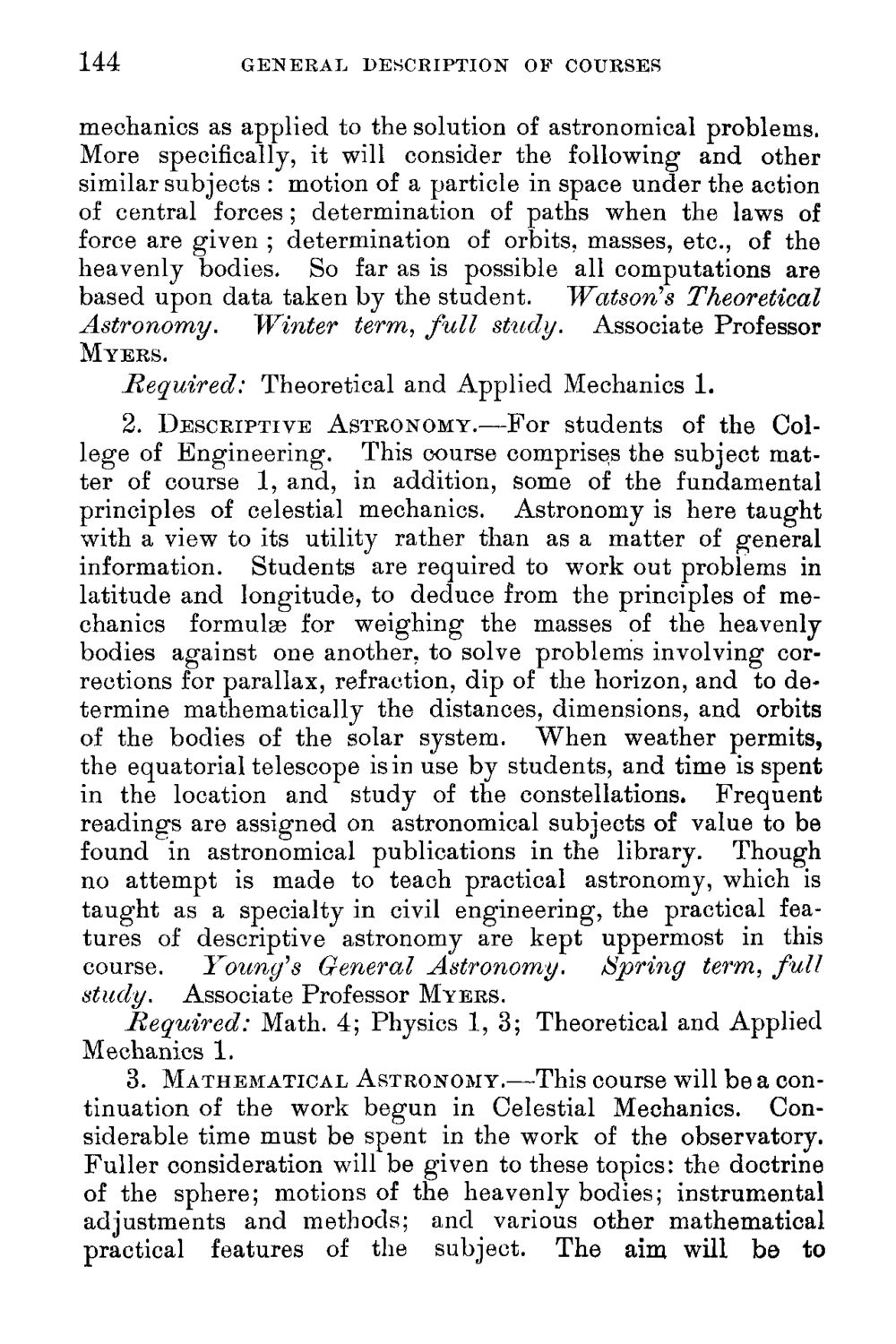| |
| |
Caption: Course Catalog - 1895-1896
This is a reduced-resolution page image for fast online browsing.

EXTRACTED TEXT FROM PAGE:
144 GENERAL DESCRIPTION OP COURSES mechanics as applied to the solution of astronomical problems. More specifically, it will consider the following and other similar subjects : motion of a particle in space under the action of central forces; determination of paths when the laws of force are given ; determination of orbits, masses, etc., of the heavenly bodies. So far as is possible all computations are based upon data taken by the student. Watson's Theoretical Astronomy. Winter term, full study. Associate Professor MYERS. Required: Theoretical and Applied Mechanics 1. 2. DESCRIPTIVE ASTRONOMY.—For students of the Col- lege of Engineering. This course comprises the subject matter of course 1, and, in addition, some of the fundamental principles of celestial mechanics. Astronomy is here taught with a view to its utility rather than as a matter of general information. Students are required to work out problems in latitude and longitude, to deduce from the principles of mechanics formulae for weighing the masses of the heavenly bodies against one another, to solve problems involving corrections for parallax, refraction, dip of the horizon, and to determine mathematically the distances, dimensions, and orbits of the bodies of the solar system. When weather permits, the equatorial telescope is in use by students, and time is spent in the location and study of the constellations. Frequent readings are assigned on astronomical subjects of value to be found in astronomical publications in the library. Though no attempt is made to teach practical astronomy, which is taught as a specialty in civil engineering, the practical features of descriptive astronomy are kept uppermost in this course. Young's General Astronomy. /Spring term, full study. Associate Professor MYERS. Required: Math. 4; Physics 1, 3; Theoretical and Applied Mechanics 1. 3. MATHEMATICAL ASTRONOMY.—This course will be a continuation of the work begun in Celestial Mechanics. Considerable time must be spent in the work of the observatory. Fuller consideration will be given to these topics: the doctrine of the sphere; motions of the heavenly bodies; instrumental adjustments and methods; and various other mathematical practical features of the subject. The aim will be to
| |